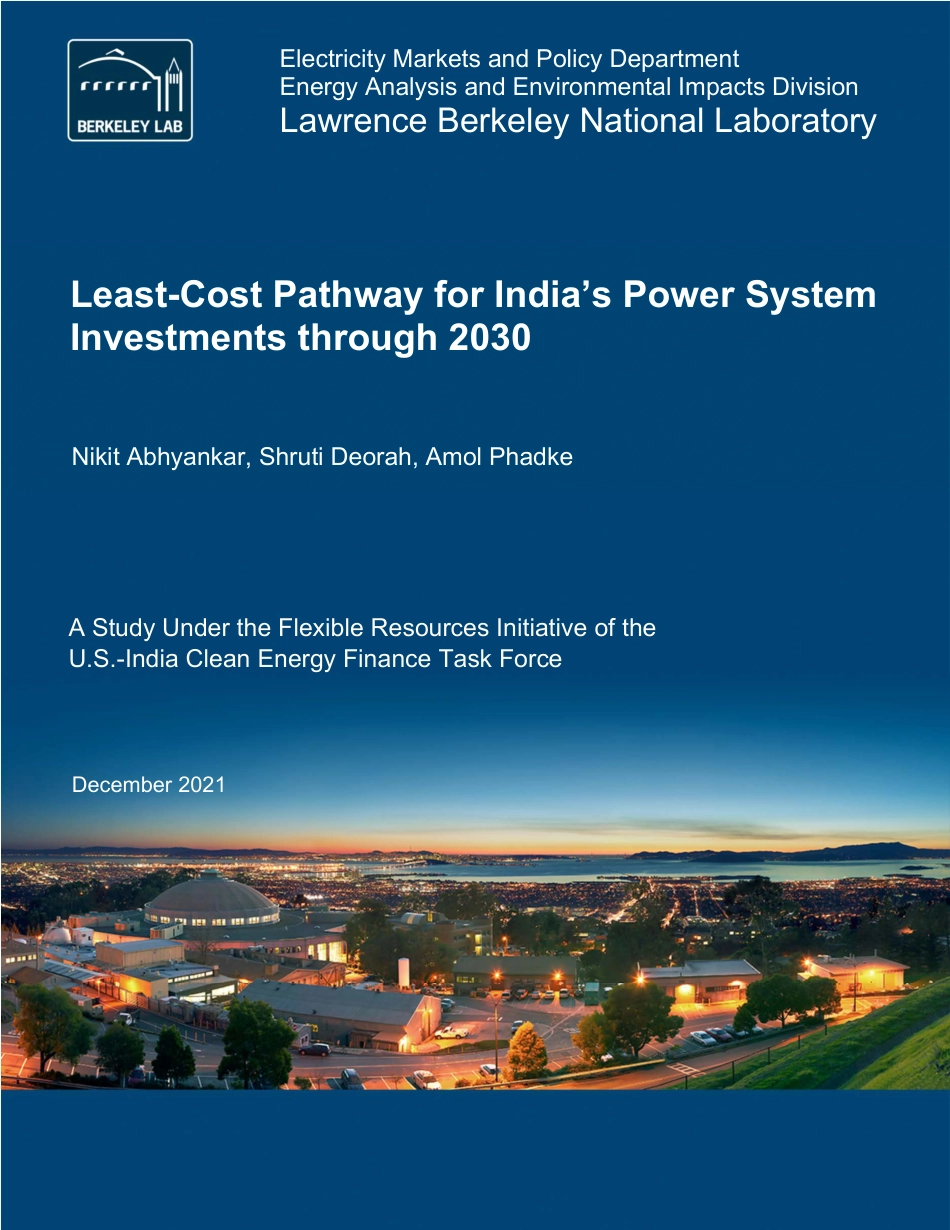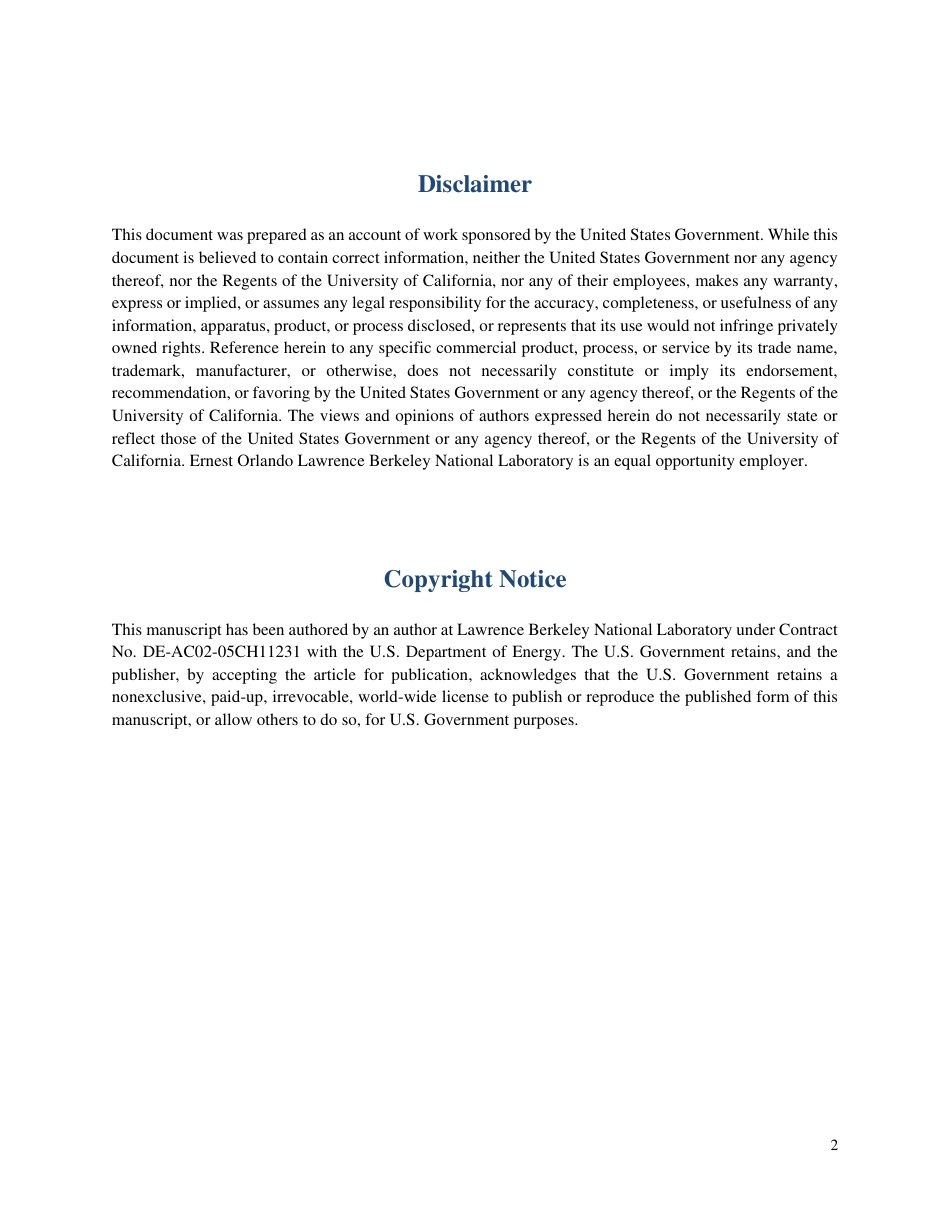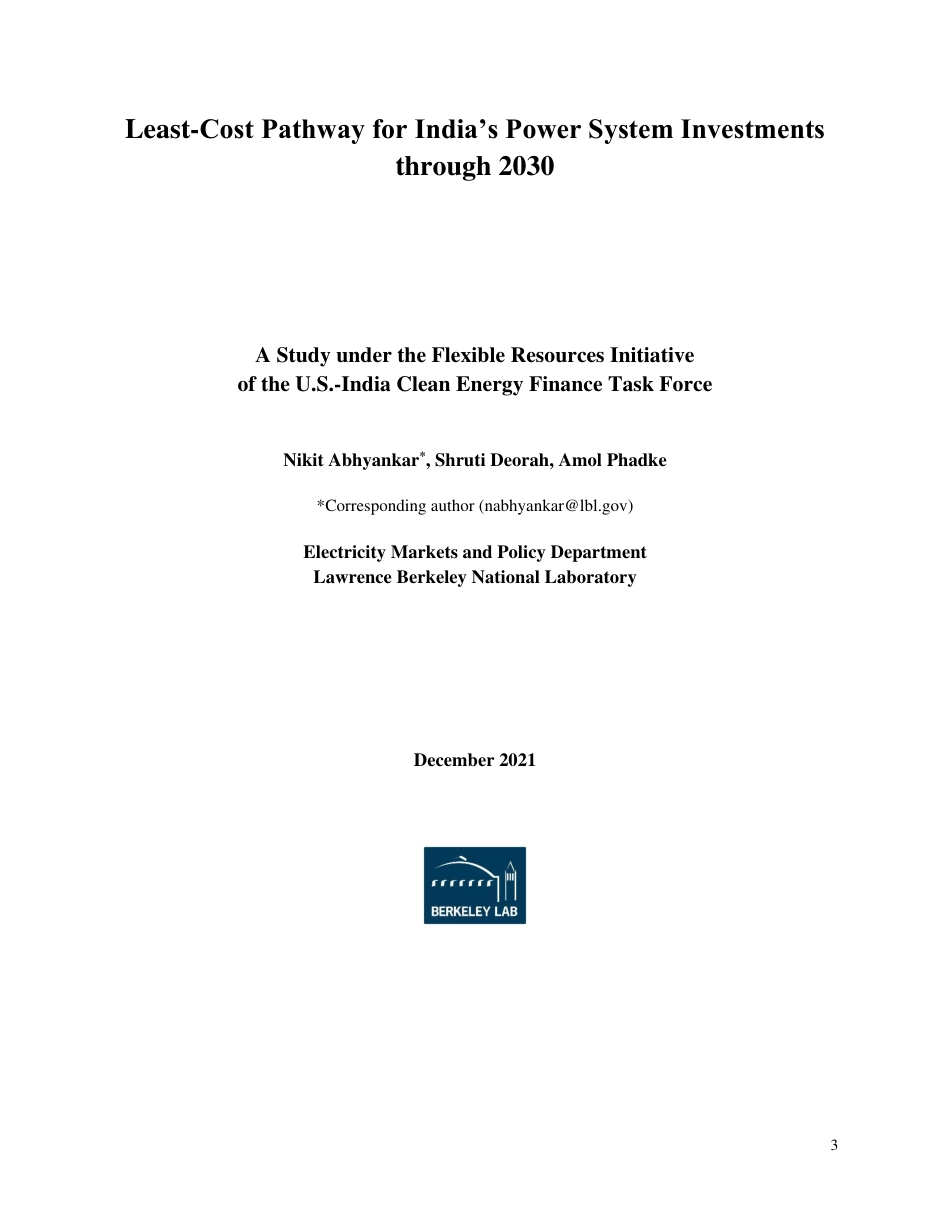Lawrence Berkeley National Laboratory December 2021 Electricity Markets and Policy Department Energy Analysis and Environmental Impacts Division Least-Cost Pathway for India’s Power System Investments through 2030 Nikit Abhyankar, Shruti Deorah, Amol Phadke A Study Under the Flexible Resources Initiative of the U.S.-India Clean Energy Finance Task Force2 Disclaimer This document was prepared as an account of work sponsored by the United States Government. While this document is believed to contain correct information, neither the United States Government nor any agency thereof, nor the Regents of the University of California, nor any of their employees, makes any warranty, express or implied, or assumes any legal responsibility for the accuracy, completeness, or usefulness of any information, apparatus, product, or process disclosed, or represents that its use would not infringe privately owned rights. Reference herein to any specific commercial product, process, or service by its trade name, trademark, manufacturer, or otherwise, does not necessarily constitute or imply its endorsement, recommendation, or favoring by the United States Government or any agency thereof, or the Regents of the University of California. The views and opinions of authors expressed herein do not necessarily state or reflect those of the United States Government or any agency thereof, or the Regents of the University of California. Ernest Orlando Lawrence Berkeley National Laboratory is an equal opportunity employer. Copyright Notice This manuscript has been authored by an author at Lawrence Berkeley National Laboratory under Contract No. DE-AC02-05CH11231 with the U.S. Department of Energy. The U.S. Government retains, and the publisher, ...



